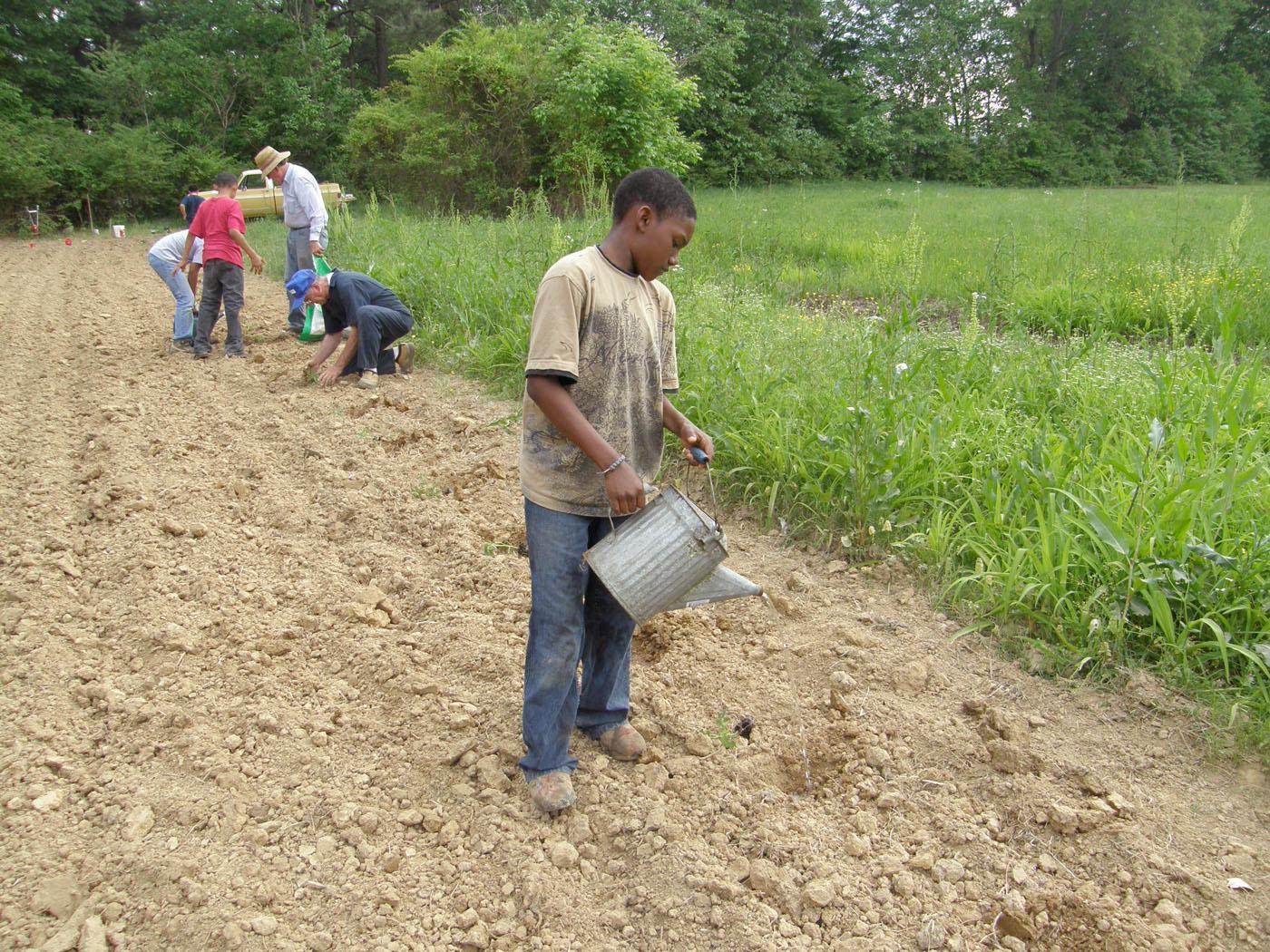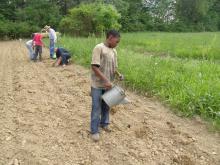Information Possibly Outdated
The information presented on this page was originally released on August 11, 2011. It may not be outdated, but please search our site for more current information. If you plan to quote or reference this information in a publication, please check with the Extension specialist or author before proceeding.
Community garden grows food, character
CORINTH – A few small seeds and many willing hands transformed an inner city vacant lot into a thriving, productive garden at the Lighthouse Foundation in Corinth.
Alcorn County Extension director Patrick Poindexter said the idea for a community garden in this challenging space took root in the mind of Master Gardener Herman Gray, who recruited other Alcorn County Master Gardeners and local businesses to the project in 2010.
“Bonnie Plant Farm donated all of the plants, Don Sims of the Alcorn County Co-Op donated seeds and fertilizer, and Wal-Mart gave them a gift card,” Poindexter said. “Master Gardeners supported the garden economically and with tomato stakes, and the Extension Service ran the soil samples.”
While the Master Gardeners planned, Gary Caveness of the Lighthouse Foundation recruited participants.
“We’ve wanted to do something like this for years, but we’re stretched thin with the programs we already offer,” Caveness said. “When Herman came to me and said they’d be willing to help, we got excited. Kids, especially kids growing up in single-parent families in the city, don’t know a single thing about gardening.”
The Lighthouse Foundation is a non-profit organization that works with urban youth through afterschool tutoring programs, summer camps and leadership programs. The garden project involves 10 to 15 boys in third through sixth grade who work alongside volunteers Gray and Richard Collins. Caveness joins in as much as he can.
“I grew up on a large farm, and it’s a way for me to spend time with the kids in a different setting,” Caveness said. “They see what they can get out of the garden and how much they like it, and their excitement motivates them to continue.
“It helps us get the boys engaged with mentors and off the streets. The kids feel valued when people pour time into them and give them strong male role models,” he said.
For the kids, it is all about the produce: the corn, squash, tomatoes, peppers, watermelons and cantaloupes they pick and take home to their families.
“When we first went to the garden to harvest, the boys couldn’t find the cantaloupes,” Gray said. “When they finally found one, they’d yell and carry on about their discovery. It was such fun.”
Though the boys participated in the planting and weeding, they still had a lot to learn about gardening.
“One boy asked me where the corn was, and he was standing right by a row of stalks,” Gray said. “I showed him the silks, how to feel the shucks to see if the corn is full, and how to peel it back to see if it’s ripe.
“We gave the kids a taste of sweet corn, right there in the garden. Their eyes lit up like Roman candles,” he said.
The garden, which is 200 feet long with 26 rows, has produced well. From the outset, the goal of the garden was not to sell the fruits and vegetables, but to use them to feed the community. The children who work in the garden take home what they want and then are encouraged to look around to see who else in their neighborhood could use some fresh food.
“We want these young people to be productive community citizens who are aware and available to help those around them,” Gray said.
Caveness said he is pleased with the changes in the outlook and attitudes of the young gardeners in the program.
“So many things are about short-term gratification, but gardening can help them see that if they plant a seed today, they can harvest months later,” he said. “We turn this into life lessons about reaping what you sow,” Caveness said.









